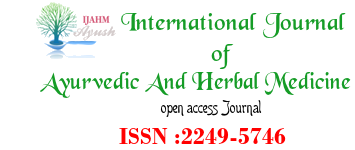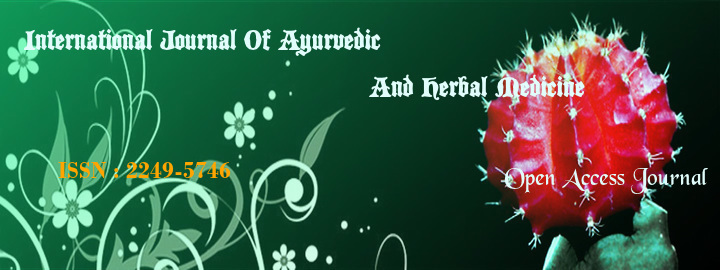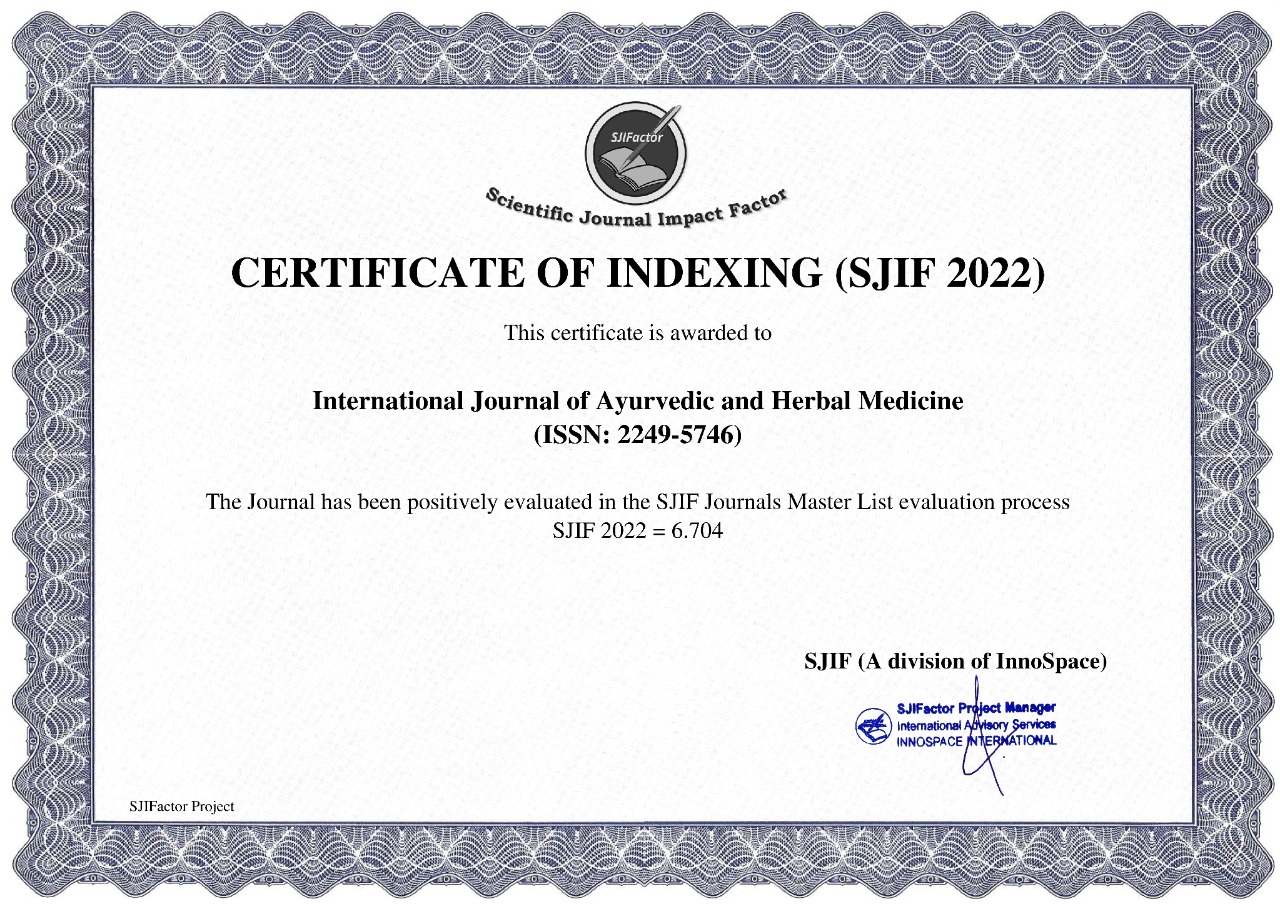


Chhabra Shailly1, Kaur Rimpaljeet 2, Singh Amitabh3
P.G. Scholar (Ay.) Kayachikitsa, Deptt. Of Kayachikitsa, D.B.U., P.G.School of Ayurveda and Research, Mandigobindgarh(PB.).
H.O.D., Deptt. Of Kayachikitsa, D.B.U., P.G.School of Ayurveda and Research, Mandigobindgarh(PB)
Corresponding author E-mail : This email address is being protected from spambots. You need JavaScript enabled to view it.
Abstract
Obesity is currently an increasingly prevalent metabolic disorder affecting more than 1.9 billion adults globally in 2014. In Ayurveda, Medoroga or Sthaulya (obesity) is considered as a medo doshaja vyadhi and also one among the kaphaja nanatmaja vyadhis. Kapha and meda are having ashrayashrayi bhava and Amritadya Guggulu is having Kapha and Medanashaka Properties. Hence the present study was under taken to assess the effect of this drug. The study was a prospective comparative Clinical Trial of two groups each of 20 patients. All the 40 patients of obesity taken from OPD section of Desh Bhagat Ayurvedic Hospital, Mandi Gobindgarh fulfilling the inclusion and exclusion criteria were included in the trial. They were divided into two groups randomly. The patients of Group A received Amritadya Guggulu 1 gm. BD with lukewarm water with honey for 60 days and patients of Group B received Amritadya Guggulu with Triphala Kwatha mixed with honey for 60 days.
In Group A, among 20 patients 2.5% patients showed marked response, 45% patients showed moderate response and 51% patients showed mild response. In Group B among 20 patients, 5% patients showed good response, 59.4 % patients showed moderate response and 35.6% has shown highly significance. In this present study, Amritadya Guggulu with two different anupaans was tried and in both groups , significant results were found but more significant results were found in Group B.
REFERANCES
1. 1. Agnivesha, Charaka Samhita, Sutrasthana, Ashtaunindatiya adyaya, 21/9. Chaukhamba Sanskrit Sansthana, Varanasi, 2011;302
2. World health Report ‘2002’ www.who.int/whr/2002/overview/en/ updated on 12/10/2014
3. http://www.who.int/mediacentre/factsheets/fs311/en/cited on 11/05/2015
4. Kasper, Braunwald et.al. Harrison’s -Principles of Internal Medicine (2008), 17 th Edition, McGraw Hill Medical Publishing Division, New York, vol.1. Ch.64. Pg. No.427
5. Sharma P.V, Chakradatta, Sthaulya Chikitsa adhyaya, 36/17, Chaukhambha Sanskrit Series Office, Varanasi, 1998; 299
6. Yogaratanakara, Yogaratanakara, Uttarardha, Medoroga Nidana Adhyayaa, Shlok No.1, Edited by Brahma Shankar Shastri, 5th Edition, Chaukhambha Sanskrit Sansthan, Varanasi, 1993;97
7. Pandey Gyanender, Rasa Chandanshu-Rasaraja Sangrah; Purva Khanda,Mishraka dravya Nirupanam Adhyaya. Sh. No. 337, Chaukhambha Krishandasa Accademy, Varanasi, 2010;.65
8. Christopher Hsleet et.al. 1999, Davidson’s, Principle and Practice of Medicine; 18th Edition, Churchil livingtone, U.K., Chapter No.7. 1999;526
9. www.triphalapowdrebenefits.com/triphala-churna/cited on 13/05/2015
10. www.progressivehealth.com/gum-guggul-for-weight-loss.html cited on 13/05/2015
index























